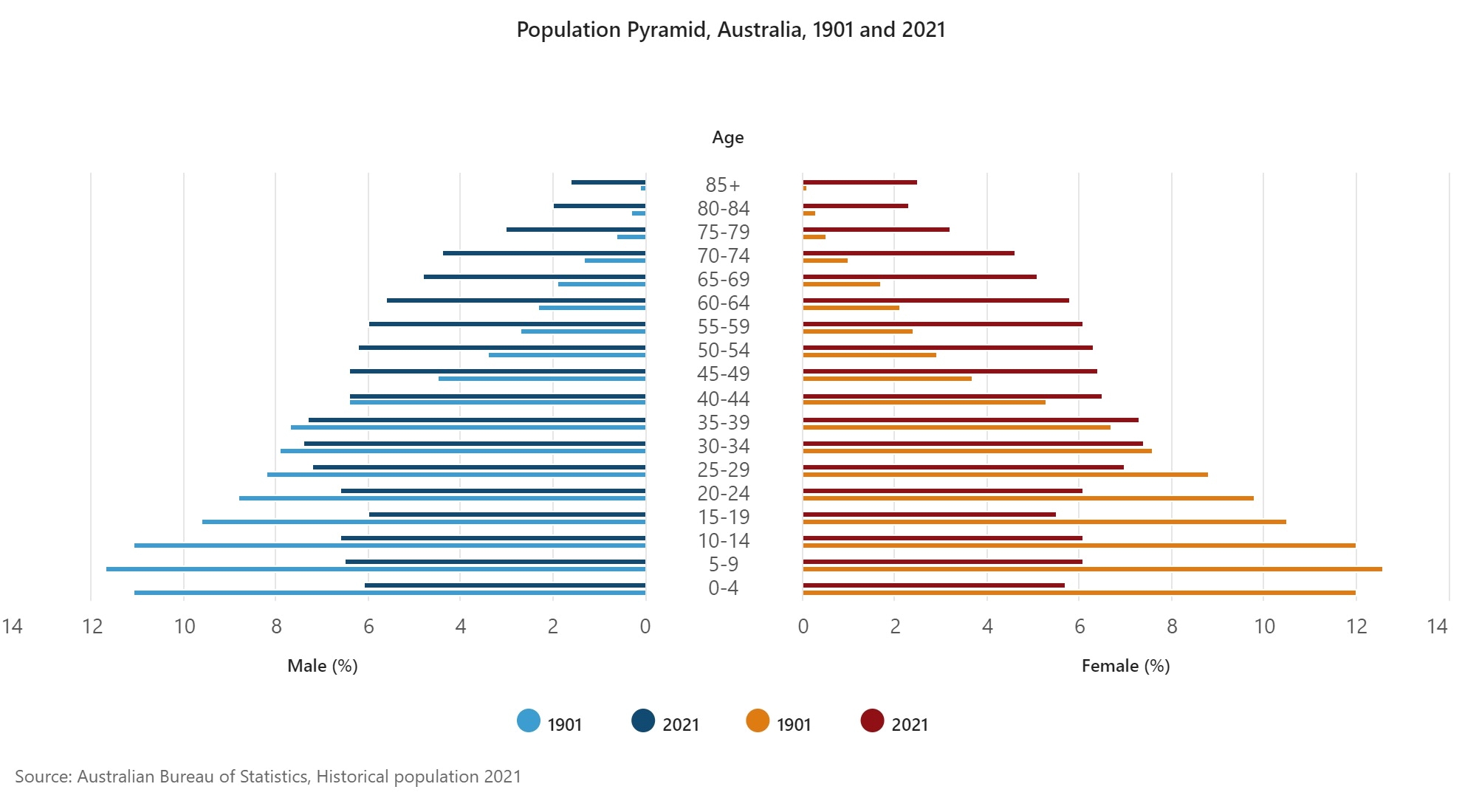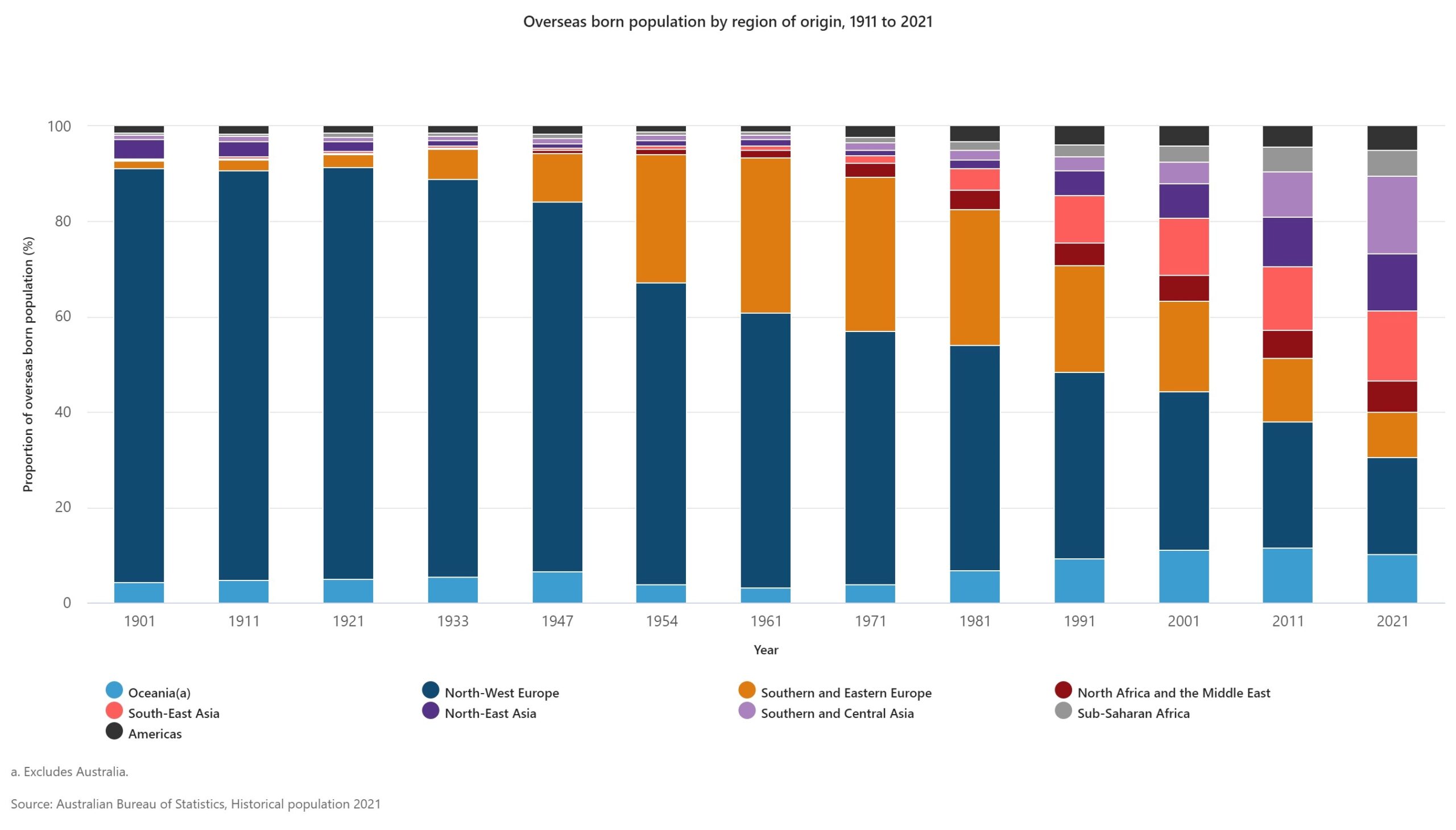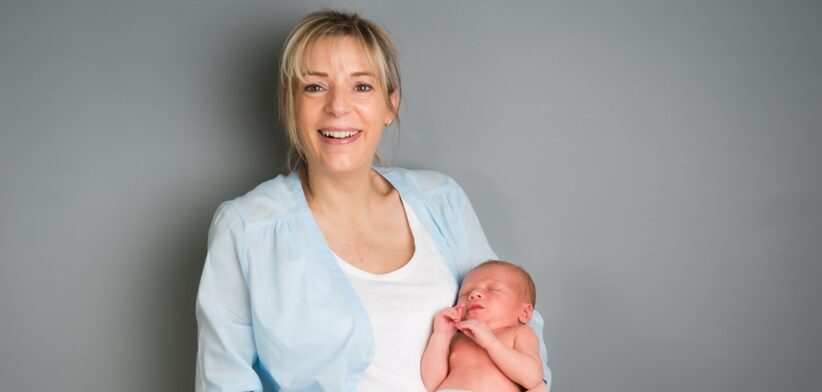The age of first-time mothers in Australia is now over 30 and less than 10 percent of Aussies live in rural areas, according to new data.
The Australian Bureau of Statistics (ABS) today released its latest snapshot of Australia’s population, analysing demographic data going back as far as it was available.
The report showed the average age of first-time mothers increased from 23.6 in 1975 to 30.5 in 2020.
In other stats, it found fertility had decreased from 3.1 births per woman in 1921 to 1.7 in 2021, with Australia’s fertility rate the highest in 1961, at 3.5 births per woman.
The new analysis looked at the nation’s population growth, distribution, age and sex structure as well as migration over 120 years.
It showed Australia’s 2021 population was 6.8 times larger than in 1901, increasing from 3.8 to 25.7 million and that national population has grown every year, excluding WWI, since 1901.
Since 1901, the five-nine years age group has had the greatest decline as a proportion of the total population, with the 60-64 age group having the greatest increase.
With regards population distribution, since 1954, the majority of Australians resided in capital cities, with the data showing the population was 57.5 percent urban in 1911 and 90.3 percent in 2021.
With regards life expectancy males were 143 and females 82 times more likely to reach their 100th birthday in 2021 than in 1901 and infant mortality has decreased from 10.4 percent of infants dying in their first year of life in 1901 to 0.3 percent in 2021.
Australia’s overseas-born proportion of the population has increased from 23 percent in 1901 to its highest proportion of 29 percent in 2021, with the lowest proportion recorded in 1947 at 10 percent.
Interstate migration has increased in line with the national population, with Queensland experiencing the highest net gain and NSW the highest net loss from internal migration.










